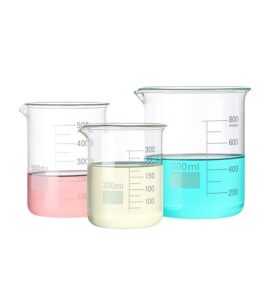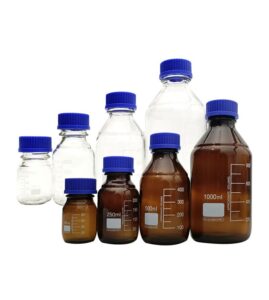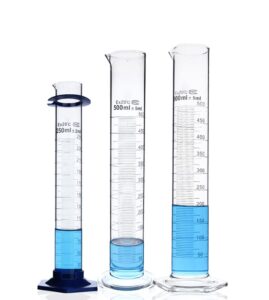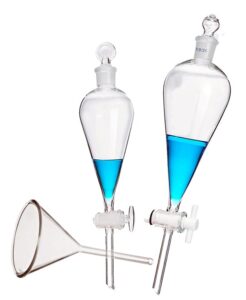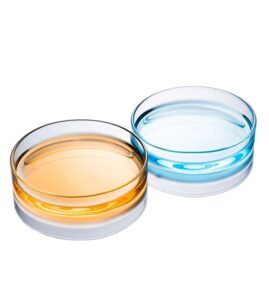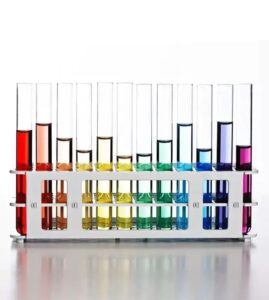Are you constantly battling with inaccurate results or contamination in your experiments? Ever wondered how the humble glass funnel can make or break your scientific endeavor? Whether you’re a seasoned researcher or a novice in the lab, mastering the use of a glass funnel is pivotal.
Glass funnels are more than just a conduit for transferring liquids; they are a crucial element in ensuring precision and safety in various laboratory processes. Proper usage, maintenance, and understanding of its capabilities can significantly enhance the quality of your results. Here’s how you can optimize outcomes with every pour, filter, and transfer.
Why the Glass Funnel Matters in Scientific Research
In the realm of scientific experiments, the accuracy and consistency of data are paramount. Using a glass funnel is a common operation in laboratories, typically for filtration, transferring, and extraction in various experimental processes. Glass funnels serve not just as tools for transferring substances but also play a vital role in processes like filtration, decantation, and material handling. Their inert nature and ease of sterilization make them indispensable in maintaining the purity and integrity of substances being handled.
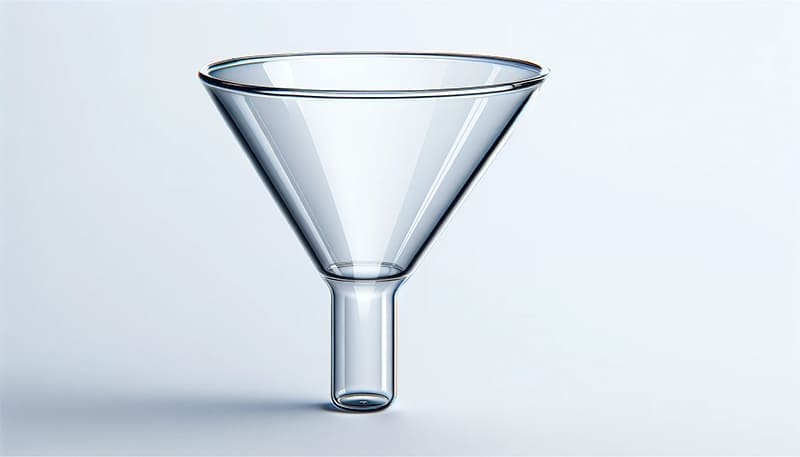
Mastering Glass Funnel Use: A Comprehensive Guide for Laboratories
Navigating the use of glass funnels is pivotal in laboratory efficiency and safety. This guide aims to elucidate the nuances of selecting, handling, and maintaining glass funnels to optimize your experimental processes and ensure reliable results.
- Selecting the Appropriate Glass Funnel: Based on the experimental requirements, choose a glass funnel with the suitable specification and shape. Common types include conical, round, and square, each with different uses and features.
- Inspecting the Glass Funnel Quality: Before use, check the funnel for any cracks, damages, or quality issues. Replace the funnel immediately if any defects are found.
- Cleaning the Glass Funnel: Before use, thoroughly clean the funnel to avoid sample contamination or affecting the results. Soak it in detergent, scrub it inside and out with a soft brush, then rinse with pure water. Finally, dry it with paper towels or a clean cloth to ensure no residue.
- Drying the Glass Funnel: Dry the funnel before use to prevent moisture contamination of the samples. You can dry it in an oven or air-dry.
- Installing the Glass Funnel: Place the funnel on a stand and secure it with a rubber stopper or clip to ensure it is stable and won’t tip over. Also, position a receiving container (like a beaker or bottle) below the funnel to collect the liquid.
- Ensuring Seal Integrity: Ensure a good seal between the funnel and the receiving bottle or beaker to prevent leaks or contamination.
- Correct Use of Filter Paper: If using filter paper for filtration, ensure it fits tightly against the funnel to prevent gaps or air bubbles. The folding of the filter paper should be correct to filter the sample effectively.
- Gentle Handling: Handle the funnel gently when taking and placing it to avoid breakage or damage. Especially when pouring samples into or out of the funnel, be gentle.
- Avoiding High Temperatures: Do not use glass funnels at high temperatures as they may break or deform. Use plastic or metal funnels for high-temperature experiments.
- Adding Filtration Substance: Before filtering, add the filtration substance like filter paper or a filter mesh. Choose these based on the experiment and the nature of the material to be filtered. Place it inside the funnel before adding the mixture to be filtered.
- Performing Filtration Operations: Pour the liquid slowly into the center of the funnel to avoid splashing. If the volume is significant, pour it in batches to prevent overflow. Be mindful of the funnel’s capacity to avoid spilling and safety hazards.
- Observing Filtration Process and Adjusting Drip Speed: Watch the speed and uniformity of filtration. If the liquid drips too quickly, it might clog the filter paper or cause overflow. Adjust the drip speed or replace the filter paper accordingly.
- Emptying Filtrate and Cleaning the Funnel: Carefully pour out the filtrate into a designated container. After use, clean and maintain the funnel with warm water and detergent, thoroughly rinsing it and drying with a towel or dryer. Store it in a dry, ventilated area to avoid moisture or collisions.
- Prompt Cleaning: Immediately clean the funnel after experiments to prevent residue from affecting subsequent experiments. Use appropriate solvents for cleaning, then rinse with water.
- Storage and Protection: After use, store the glass funnel in a dry, ventilated place away from direct sunlight and potential impacts. Regularly check for any damage or quality issues and replace if necessary.
- Safe Operation: Be cautious during filtration or extraction to avoid touching sharp parts of the funnel or injuring yourself. Use gloves or other protective measures when handling hot liquids or solid samples to prevent burns.
- Compliance with Regulations: Adhere to relevant regulations and requirements for safe and proper use and maintenance of the funnel. Consult laboratory managers or professionals for guidance on compliance.
- Additional Considerations: Handle the funnel with care to avoid excessive force that might cause breakage or damage. Ensure stability during use, and promptly address any clogging or overflow. Regularly clean and inspect the funnel for damage and replace as necessary.
Mastery of glass funnel techniques is indispensable for the modern laboratory. Implementing the guidelines provided will not only enhance the accuracy of your experiments but also contribute to a safer and more productive laboratory environment. Remember, meticulous attention to the handling, cleaning, and storage of glass funnels is the key to their optimal utility and longevity in scientific endeavors
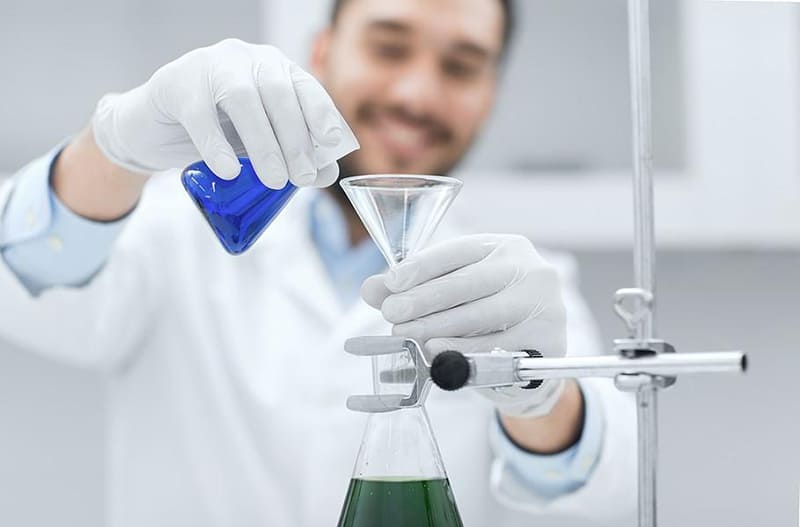
Ensuring Laboratory Safety: Understanding Chemical Interactions with Glass Funnels
In the dynamic environment of a laboratory, understanding the subtleties of how chemicals interact with equipment is not just beneficial—it’s essential for safety, accuracy, and the longevity of your tools. When it comes to glass funnels, a staple in many experimental setups, knowing how they react with various substances can significantly impact their effective and safe usage. Here’s a deep dive into the interactions between different chemical substances and glass, along with a quick reference guide to help you make informed decisions.
1. Interactions Between Chemical Substances and Glass Funnels
Understanding the interaction between various chemical substances and glass funnels is crucial for ensuring both safety and integrity in laboratory processes. Glass is generally chosen for its inert nature; however, it can still be susceptible to certain chemicals, particularly under extreme conditions of temperature and concentration.
- Acids and Bases: Strong acids like hydrofluoric acid (HF) and strong bases like sodium hydroxide (NaOH) can etch or dissolve glass over time. When using these substances, it’s essential to limit their contact time with the glass and to use glassware that has been specifically treated to resist such chemicals.
- Hydrofluoric Acid (HF): This is an exception to the general resistance of glass to acids. HF readily reacts with the silicon dioxide in glass, leading to significant etching and potential structural compromise. Use plastic materials like polyethylene or Teflon when working with HF.
- Alkaline Solutions: Prolonged exposure to strong alkaline solutions can lead to glass degradation, known as “alkaline etching.” This is particularly pertinent when dealing with high-temperature processes.
- Organic Solvents: While most organic solvents do not react aggressively with glass, issues can arise with storage and evaporation, leading to deposits or stains. Some solvents can also cause glass to become brittle over time, especially under UV light or other radiation sources.
Key Considerations When Using Corrosive Solvents or Reagents:
- Duration of Exposure: Minimize the time that the glass is in contact with particularly aggressive chemicals.
- Temperature: Be wary of conducting high-temperature reactions with corrosive chemicals in glass apparatus, as increased temperature can significantly accelerate the reaction rate between the glass and chemical.
- Concentration: Use dilute solutions whenever possible, as higher concentrations increase the likelihood and rate of reaction.
- Quality of Glass: Ensure you are using high-quality, laboratory-grade glassware, which is designed to withstand typical lab chemicals and conditions.
2. Reference Table for Material Compatibility
Here’s a simplified reference table indicating the general compatibility of glass with various chemical groups. However, always refer to specific manufacturer data and safety sheets for precise information, as variations can occur based on the exact chemical composition and conditions of use.
| Chemical Type | Compatibility with Glass | Notes/Exceptions |
|---|---|---|
| Dilute Acids | Generally Compatible | Except Hydrofluoric Acid (HF) |
| Concentrated Acids | Use with Caution | Prolonged exposure can lead to etching |
| Dilute Bases | Generally Compatible | – |
| Concentrated Bases | Use with Caution | Can lead to alkaline etching |
| Organic Solvents | Generally Compatible | Some may cause brittleness or deposits over time |
| Salts | Generally Compatible | – |
| Oxidizers | Generally Compatible | – |
| Reducing Agents | Generally Compatible | – |
Understanding the chemical interactions with glass funnels is not just about maintaining equipment—it’s about ensuring the integrity of your experiments and the safety of laboratory personnel. By staying informed about the materials you work with and adopting a proactive approach to equipment selection and maintenance, you can foster a safer, more efficient laboratory environment. Always consult with material safety data sheets and equipment guidelines to choose the right glass funnel for your needs and to handle it appropriately based on the chemicals involved. This knowledge is your first line of defense in a world where science progresses rapidly and safety should never be an afterthought.

Troubleshooting and Problem-Solving: Navigating Common Issues with Glass Funnels
Even the most experienced scientists encounter issues with laboratory equipment. Understanding how to troubleshoot these problems is key to maintaining efficiency and safety in the lab. When it comes to glass funnels, several common issues might arise, such as slow filtration, leakage, or breakage. Here’s a guide on how to troubleshoot these problems effectively and strategies to reduce risks and respond to accidents.
Common Issues and Troubleshooting Tips
1. Slow Filtration:
- Cause: This is often due to a clogged filter or an inappropriate filter grade for the particulate size.
- Solution: Check and replace the filter paper with one of suitable porosity. Ensure the filter paper is correctly placed and fully covers the funnel’s surface. Pre-wet the filter paper with a suitable solvent to help initiate the filtration process.
2. Leakage:
- Cause: Leakage typically occurs when there is an improper seal between the funnel and the receiving flask or when there are cracks in the funnel.
- Solution: Ensure that the funnel is properly aligned with the flask or beaker. Use an appropriately sized rubber stopper or adapter to create a tight seal. Regularly inspect the funnel for any cracks or chips, especially around the stem, and replace if necessary.
3. Breakage:
- Cause: Glass funnels can break due to mechanical shock, thermal shock, or stress.
- Solution: Handle glassware carefully to avoid impacts or drops. Avoid exposing glass funnels to sudden temperature changes. Ensure gradual heating and cooling to minimize the risk of thermal shock. Store the funnels safely in a padded or secure area to prevent accidents.
Strategies for Reducing Risks and Responding to Laboratory Accidents
- Regular Inspection: Regularly inspect all glassware before and after use for any signs of damage or wear. Even small chips or cracks can lead to failures and should be addressed immediately.
- Proper Handling and Use: Educate all laboratory personnel on the proper handling and use of glass funnels. This includes understanding the limitations of glassware under certain chemical and temperature conditions.
- Emergency Protocols: Have clear and accessible emergency protocols in place for handling breaks, spills, or other accidents involving glassware. Ensure that all personnel are trained in first aid and know how to respond to different types of laboratory incidents.
- Invest in Quality: Use high-quality, laboratory-grade glassware that is less prone to failure and can withstand the rigors of regular use. Cheaper alternatives might be tempting but can lead to more frequent and dangerous failures.
- Alternative Materials: Consider using funnels made from alternative materials like plastic or metal for certain applications, especially where the risk of breakage or chemical incompatibility is high.
By anticipating common issues and implementing these troubleshooting and risk reduction strategies, you can maintain a safer, more efficient, and productive laboratory environment. Always prioritize safety and quality in your laboratory practices and equipment to ensure the best outcomes in your scientific endeavors.

FAQ: Addressing Your Queries on Glass Funnel Usage
In the spirit of fostering a deeper understanding and facilitating efficient lab work, we’ve compiled a list of frequently asked questions about glass funnels. This section aims to clarify common concerns and provide quick, accessible insights into the use and maintenance of glass funnels.
Commonly Asked Questions About Glass Funnels
Q1: Can glass funnels be used with any chemical?
- A1: While glass is generally resistant to many chemicals, certain substances, particularly strong acids like hydrofluoric acid or strong bases, can etch or damage glass. Always refer to chemical compatibility charts before use.
Q2: How do you ensure a filter paper fits properly in a glass funnel?
- A2: The filter paper should be appropriately sized and folded to fit snugly within the funnel. Wetting the filter paper with a solvent can help it adhere to the funnel’s sides, ensuring a proper seal.
Q3: Why is my filtration process using a glass funnel so slow?
- A3: Slow filtration can be due to a clogged filter, too fine a filter paper, or an overly viscous solution. Try pre-wetting the filter paper or using a filter with a larger pore size.
Q4: How do you clean and store glass funnels after use?
- A4: Clean glass funnels with appropriate detergents, rinse thoroughly with distilled water, and dry. Store upright in a secure, padded location to prevent tipping and damage.
Q5: Are there alternatives to glass funnels for high-temperature applications?
- A5: Yes, for high-temperature applications, consider using funnels made from materials like PTFE (Teflon) or stainless steel, which can withstand higher temperatures without risk of breaking.
Q6: How often should glass funnels be replaced?
- A6: Replace glass funnels if you notice any chips, cracks, or significant scratches that could lead to breakage or contamination. Regular inspection is key to determining their longevity.
While glass funnels are integral to many laboratory processes, understanding their limitations, proper care, and usage is crucial for optimal results. This FAQ serves as a guide, but always consult detailed references or lab safety manuals for comprehensive information. Your awareness and diligence are vital in navigating the scientific landscape safely and effectively.
Conclusion
The guide to perfect glass funnel usage is a testament to meticulous laboratory practice. It’s an invitation to embrace precision, safety, and the continuous pursuit of knowledge in every experiment. For more insights and a wide selection of high-quality glass funnels, visit here. Dive into a world where every detail matters, and optimize your outcomes today!


